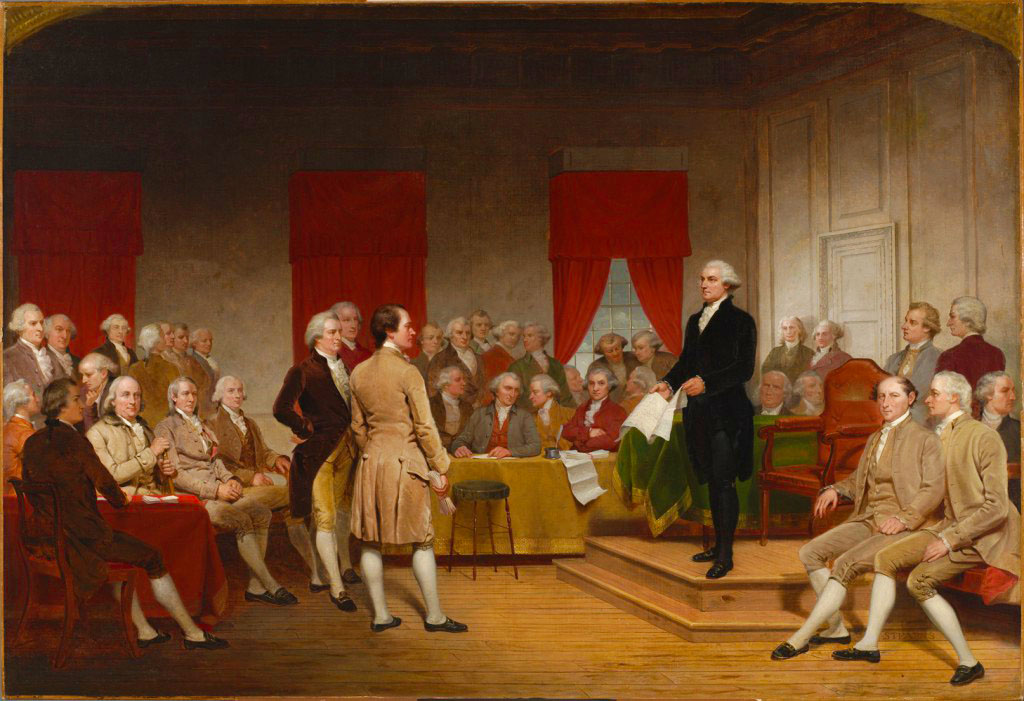

This guide provides access to the Library of Congress's digital collections, external websites, and print materials related to the Constitution.
Documentary history of the American Constitution by the Avalon Project at the Yale Law School. Access digital documents with contextual definitions and other information linked throughout the text.
Read the United States Constitution, The Bill of Rights, and the 11th-27th Amendments. This page also provides links on the right-hand side of the page that answer the following questions: what does it say? How did it happen? How was it made? Who were the framers of the Constitution? and more.
This page provides information on the Constitutional Convention, ratification, and The Bill of Rights.

How the Constitution came to be as we know it today.

Find information in this section related to:

The National Archives details how the document was made, who attended the Constitutional Convention, and who signed it.
Find out who signed the Constitution and which state they represented.
At the Federal Convention of 1787, now known as the Constitutional Convention, the framers of the United States Constitution established in Article I the structure and powers of Congress. The delegates who gathered in Philadelphia during the summer of 1787, first to revise the existing form of government and then to frame a new Constitution, debated the idea of a Congress comprised of two houses. One house would be, in the words of Virginia’s George Mason, the “grand depository of the democratic principle of government.” To counter this widespread influence in the national government, James Madison of Virginia proposed another house that would be small, deliberative, and independent from the larger, more democratic house. This became the Senate.
The characteristics of the Senate—the basis of representation, the number of senators per state, the qualifications for office, the terms of service, and the powers that the body exercises—were the product of fierce debate and some compromises at the Constitutional Convention. The framers looked to precedents in the British system of government and the state constitutions. The plan for the new government, including the Senate, was developed throughout the Convention by delegates working in committees. A Committee of Eleven (also called the Grand Committee), appointed on July 2, proposed a solution to an impasse over-representation in the House and Senate. On August 6, a Committee of Detail drafted the Constitution, summarizing the principles already agreed upon by the Convention. Another Committee of Eleven (sometimes called the Committee on Postponed Parts) was appointed on August 31 to address the Convention's unresolved questions. Finally, a Committee on Style and Arrangement proposed the language for the version of the Constitution signed by the delegates on September 17.
Although the Senate has changed significantly over its history, its unique role in the federal government remains anchored in the nation’s founding document.
Source: Transcribed from U.S. Senate: About the Senate and the Constitution